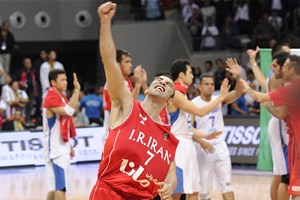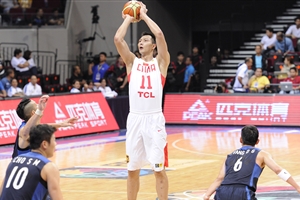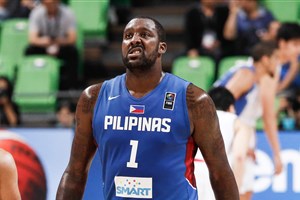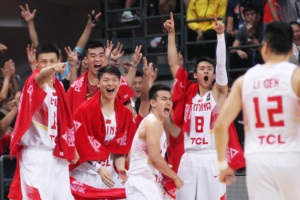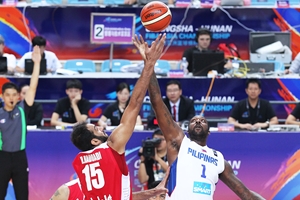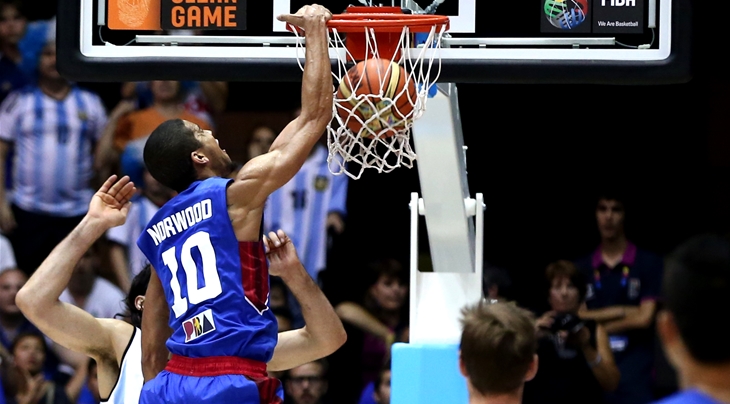
2015 FIBA Asia Championship Preview - Group B
MANILA (2015 FIBA Asia Championship) - In the lead-up to the 2015 FIBA Asia Championship taking place in Changsha-Hunan from 23 September-3 October, we take a look at each of the four groups.
Here's a look at Group B.
HONG KONG
Preparation period: Hong Kong were a pretty competitive bunch at the 2013 FIBA Asia Championship, advancing to the second round and finishing in the competition's top 10 teams. This time around, however, things will be quite different, especially since they haven't really been able to play any quality tune-up games and haven't been able to train outside the country.
Star player: There are only five holdovers from the 2013 FIBA Asia Championship on this squad, and 2.05m Duncan Reid is the one expected to be the team's anchor. Reid averaged around 11.7 points, 8.4 rebounds and 2.3 assists for Hong Kong two years ago, and with no other player taller than 2.03m on the squad, Reid will certainly be the team's best option to man the slot. He will have his work cut out for him, though, as he is sure to go up against the likes of Sani Sakakini, Asi Taulava, and, gulp, Andray Blatche.
Strengths and weaknesses: As usual, shooting and speed are the expected strengths of Hong Kong. Guards Lee Ki and Chan Siu-Wing are both fleet-footed and deadly from long range, while undersized frontcourt player Wong Chun-Wai can spread the floor with his three-point shooting prowess (he hit 4 triples against Japan in 2013). Size, inexperience and lack of depth will be their weaknesses, though. Outside of Reid, nobody can really match up well with the big men of the Philippines and Palestine, while not having reliable veterans like Lo Yi-Ting and Fong Shing-Yee will surely hurt their chances.
KUWAIT
Preparation period: Kuwait didn;t make much noise in terms of their preparations for the 2015 FIBA Asia Championship, but the team that placed second in the Gulf sub-zone qualifying tournament was still able to hold a couple of tune-up games in Manila against quality competition. They surely needed that experience and it is expected to have helped them toughen up for the grind in Changsha, Hunan.
Star player: Twenty-eight-year-old Hussain Al-Khabbaz was among his team's leading scorers at the 2014 Asian Games, putting up around 12 points per game. He also connected on 44 percent of his three-point attempts. With erstwhile leading scorer Ahmad Al-Baloushi not on Kuwait's final 12-man roster, the onus will be on Al-Khabbaz to try and lead this team to the second round.
Strengths and weaknesses: Much like Hong Kong, Kuwait won't list size among their strengths. At 1.98m, Mohammad Marzouq is already the tallest player on coach Khaled Yousef's team and that's certainly going to work against them. The Kuwaitis, therefore, are expected to rely on their perimeter game and defense against much deeper and more seasoned competition. Aside from Al-Khabbaz, only Abdulaziz Al-Hamidi, Mohammad Ashkanani, and Mashari Abu Dhom are the holdovers from the 2014 Asian Games team and it's reasonable to expect them to play major roles for Kuwait.
PALESTINE
Preparation period: It's the first time in their history that Palestine is joining the FIBA Asia Championship, so they have made sure to prepare for it as best they could. The most notable thing they've done is to play in a 4-nation pocket tournament in China recently, where they finished in third place behind hosts China and Jordan. Of course, they also impressed earlier in the year by placing third in the West Asia Basketball Association (WABA) Championship, beating Syria and Iraq to join Iran, Lebanon and Jordan as the sub-zone’s representatives.
Star player: Finally, the continent will get to see Sani Sakakini play at the FIBA Asia Championship! He has been plying his trade as an import in Jordan, China and Lebanon for the past decade, and he has slowly built a reputation for being a very reliable big man. Most recently, he played for Hoops Club in Lebanon's pro league, registering averages of 20.4 points, 11.9 rebounds, and 2.0 steals per game. If he can even just approximate those number sin Changsha, Hunan, he will certainly be a force to reckon with.
Strengths and weaknesses: Sani, together with his brother Salim Sakakini, Shadi Khatib and Hamza Yousef should form a formidable frontline for coach Jerry Steele. This, in turn, should be balanced out by a dangerous wing combo composed of Ahmed Haroon, Jamal Abu Shamala and Central Arkansas product Imad Qahwash, who last played as an import in the Iranian Superleague. It's a shame that they weren't able to bring more talented guys such as Omar Krayem or Nicola Fadayel, both of whom could've made their backcourt even more menacing. Perhaps the one true barrier for this team is the fact that they've never played at this level before. It will be very interesting to see how they will adjust.
PHILIPPINES
Preparation period: The Philippines began very late with naming their national pool and starting their training camp. If things get derailed in Changsha-Hunan, they can look back on a protracted professional league calendar as one of the contributing factors. Having said that, gaining experience battling Estonia, Iceland and the Netherlands in a trip to Europe was vital. The same can be said of their improved showing in the 2015 Jones Cup and their title-clinching stint in the MVP Cup. Just recently head coach Tab Baldwin took his team to Cebu City to get away from the maddening Manila atmosphere and to further improve team chemistry.
Star player: Andray Blatche was a beast in the 2014 FIBA Basketball World Cup, finishing second among all players in scoring (21.2 points) and leading everyone in rebounding (13.8 boards). He is surely an upgrade over Marcus Douthit, and especially after coming off a great season in the CBA, he should be a cut above the rest of the field this year. The only knocks on Blatche have been his fitness (let's just say he isn't as trim as he was in 2014) and his inconsistency. If the former NBA stalwart can put up numbers similar to what he did in 2014, the Philippines may just win the whole thing.
Strengths and weaknesses: With Blatche patrolling the paint along with veterans Ranidel de Ocampo, Marc Pingris and Asi Taulava, and the perimeter manned by the likes of Jayson Castro, Gabe Norwood and Terrence Romeo, the Filipinos definitely have a good balance of size, speed and shooting. And even without marquee PBA players June Mar Fajardo, Japeth Aguilar, Marcio Lassiter and Paul Lee, this is a team with considerable depth. However, it remains to be seen if the oldest team in the 16-team field can match up well with bigger sides like Iran and China and if they channel the trademark Filipino flair into productive gains instead of frustrating setbacks.
FIBA




